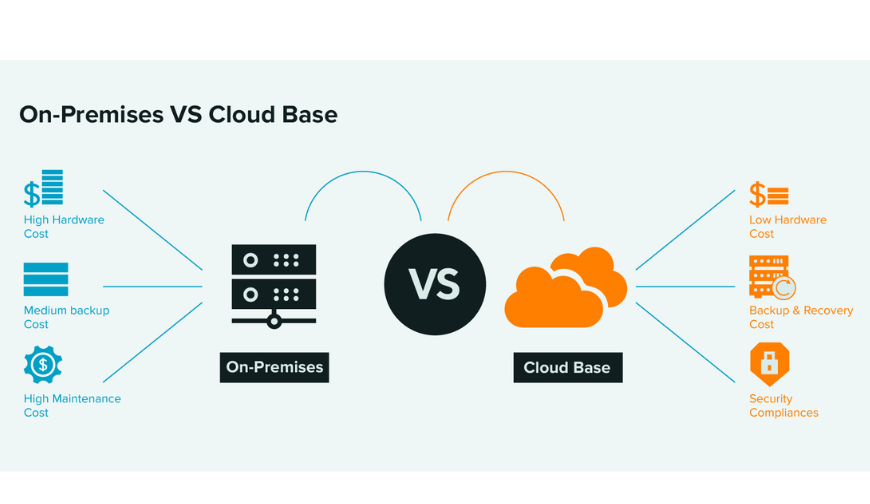In the digital landscape, efficient deployment of web applications is crucial for businesses to thrive. LAMP, which stands for Linux, Apache, MySQL, and PHP/Python/Perl, represents a popular stack used for web development. However, choosing the right deployment strategy, whether on-premises or cloud-based, can significantly impact the performance, scalability, and security of your applications.
Understanding On-Premises Deployment
On-premises deployment involves hosting your LAMP stack infrastructure within your own physical data center or servers. This traditional approach provides full control over hardware and software configurations, making it ideal for organizations with stringent security and compliance requirements.
Pros of On-Premises Deployment
- Complete control over infrastructure
- Enhanced security due to physical isolation
- Predictable performance and latency
Cons of On-Premises Deployment
- High upfront costs for hardware and infrastructure setup
- Limited scalability, requiring additional investment for expansion
- Maintenance overhead, including hardware upgrades and software patches
Use Cases
On-premises deployment is favored by industries such as finance, healthcare, and government, where data privacy and regulatory compliance are paramount.
Exploring Cloud Deployment
Cloud deployment, on the other hand, involves leveraging third-party infrastructure providers like Amazon Web Services (AWS), Microsoft Azure, or Google Cloud Platform (GCP) to host your LAMP stack. This approach offers scalability, flexibility, and cost-efficiency, as resources are provisioned on-demand.
Pros of Cloud Deployment
- Scalability to handle fluctuating workloads
- Pay-as-you-go pricing model, reducing upfront costs
- Automated backups and disaster recovery options
Cons of Cloud Deployment
- Dependence on internet connectivity for access
- Potential security concerns, although cloud providers offer robust security measures
- Limited customization compared to on-premises solutions
Use Cases
Cloud deployment is favored by startups, small to medium-sized businesses, and enterprises looking to adopt agile development practices and scale rapidly.
Comparison between On-Premises and Cloud Deployment
When deciding between on-premises and cloud deployment for your LAMP stack, several factors should be considered:
Cost Analysis
On-premises deployment requires substantial upfront investment in hardware, networking, and maintenance, whereas cloud deployment offers a more cost-effective pay-as-you-go model, allowing businesses to scale resources as needed without overprovisioning.
Scalability
Cloud deployment provides unparalleled scalability, enabling businesses to handle sudden spikes in traffic or demand without disruptions. On-premises solutions may struggle to scale efficiently without significant investments in infrastructure.
Security Considerations
While on-premises deployment offers greater control over security measures, cloud providers invest heavily in state-of-the-art security technologies and compliance certifications, making them a viable option for sensitive workloads.
Maintenance and Updates
Cloud deployment automates many maintenance tasks, such as software updates and backups, reducing the burden on IT teams. On-premises solutions require dedicated personnel for ongoing maintenance and support.
Factors Influencing Deployment Choice
Several factors influence the decision between on-premises and cloud deployment:
- Budget Constraints: Organizations with limited capital may prefer the pay-as-you-go model of cloud deployment.
- Technical Expertise: On-premises deployment requires skilled IT staff for setup and maintenance, while cloud deployment relies on the expertise of cloud providers.
- Regulatory Compliance: Industries with strict regulatory requirements may opt for on-premises deployment to maintain full control over data governance and compliance.
Hybrid Deployment Approaches
Hybrid deployment combines elements of both on-premises and cloud solutions, allowing businesses to leverage the benefits of each approach. For example, sensitive data can be stored on-premises for compliance reasons, while less critical workloads can be hosted in the cloud for scalability.
Best Practices for LAMP Deployment
Regardless of the chosen deployment strategy, following best practices is essential for optimal performance and reliability:
- Performance Optimization: Fine-tune your LAMP stack for maximum efficiency and responsiveness.
- Disaster Recovery Planning: Implement robust backup and recovery strategies to mitigate the risk of data loss.
- Monitoring and Management: Use monitoring tools to track performance metrics and detect issues proactively.
Case Studies
Real-world examples showcase the successful deployment of LAMP stacks in various industries, highlighting best practices and lessons learned.
Future Trends in LAMP Deployment
As technology evolves, new trends such as serverless computing, containerization, and edge computing will shape the future of LAMP deployment, offering innovative solutions for businesses seeking agility and scalability.
Conclusion
Choosing between on-premises and cloud deployment for your LAMP stack depends on factors such as cost, scalability, security, and compliance. By understanding the pros and cons of each approach and considering your organization’s specific requirements, you can make an informed decision that aligns with your business goals.
FAQs
- Is cloud deployment always cheaper than on-premises deployment?
- While cloud deployment offers cost advantages such as pay-as-you-go pricing, the total cost of ownership depends on factors like workload, usage patterns, and regulatory compliance requirements.
- How can I ensure data security in a cloud deployment?
- Cloud providers offer a range of security features such as encryption, identity and access management, and compliance certifications. Additionally, implementing strong security practices and regularly auditing your infrastructure can enhance data security.
- What are the advantages of hybrid deployment?
- Hybrid deployment allows businesses to balance the benefits of on-premises control with the scalability and flexibility of the cloud. It offers greater flexibility in workload placement and can accommodate diverse business needs.
- What steps should I take to optimize performance in a LAMP deployment?
- Performance optimization involves tuning each component of the LAMP stack, including the web server, database, and application code. Techniques such as caching, load balancing, and code optimization can improve response times and scalability.
- How can I stay updated on the latest trends in LAMP deployment?
- Engaging with industry forums, attending conferences, and following reputable blogs and publications can help you stay informed about emerging trends, technologies, and best practices in LAMP deployment.




